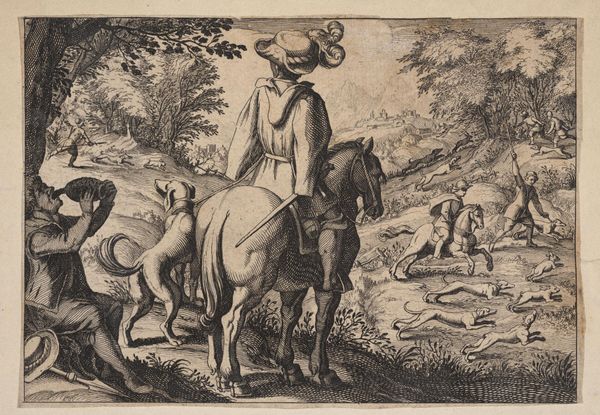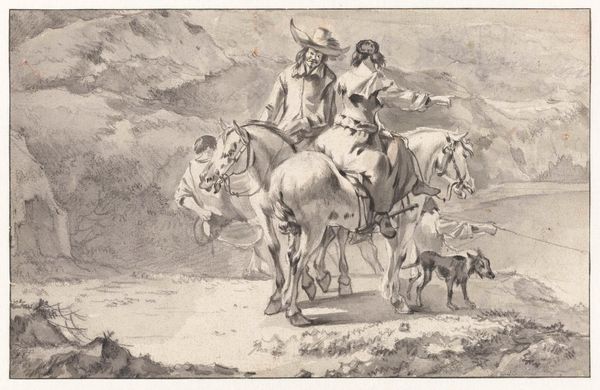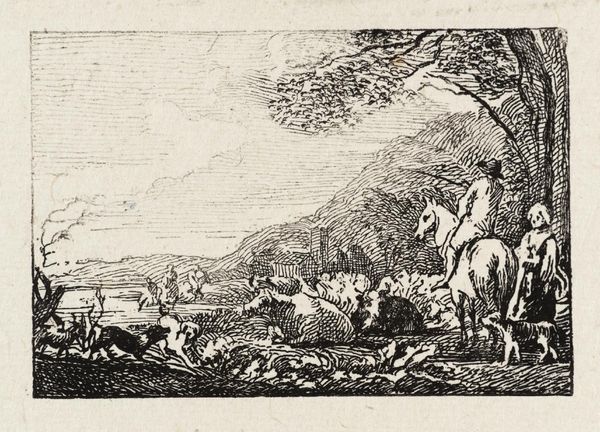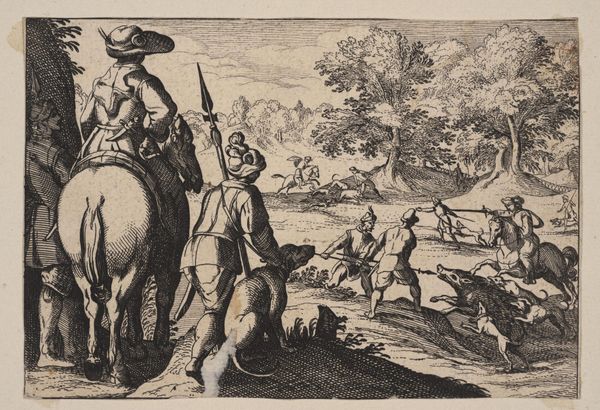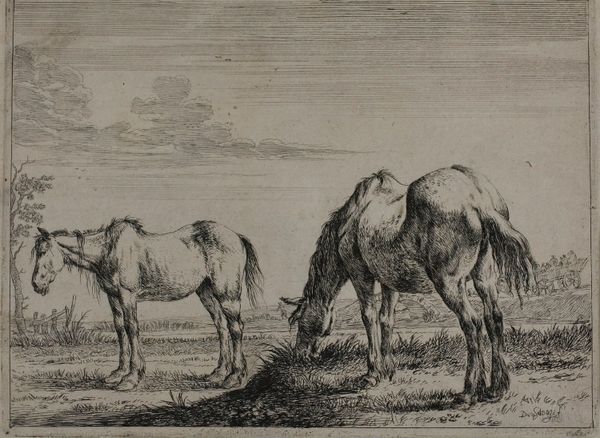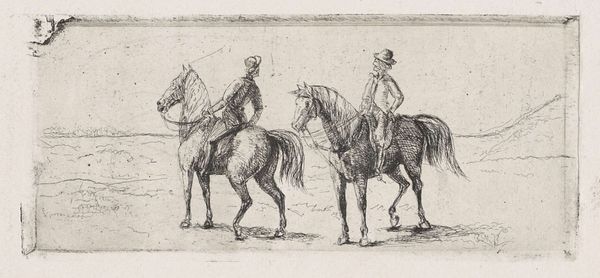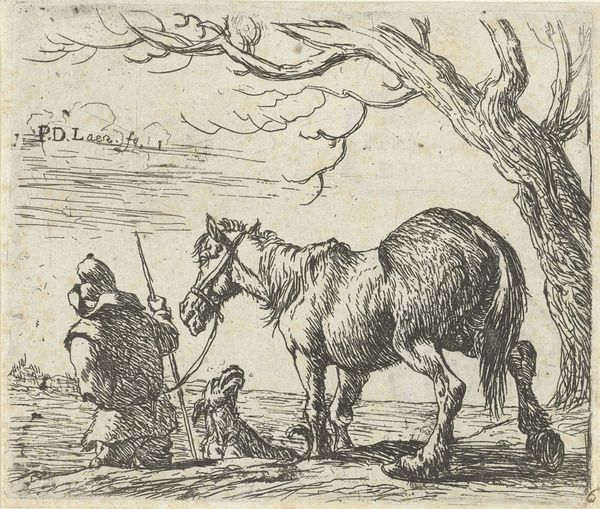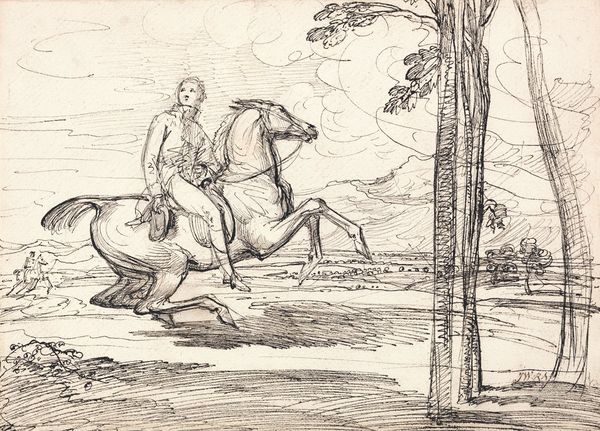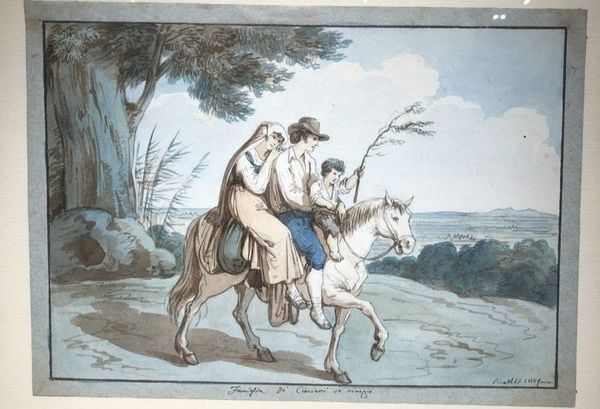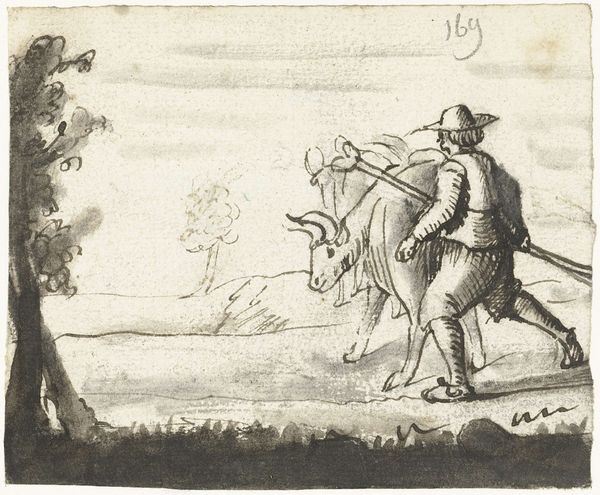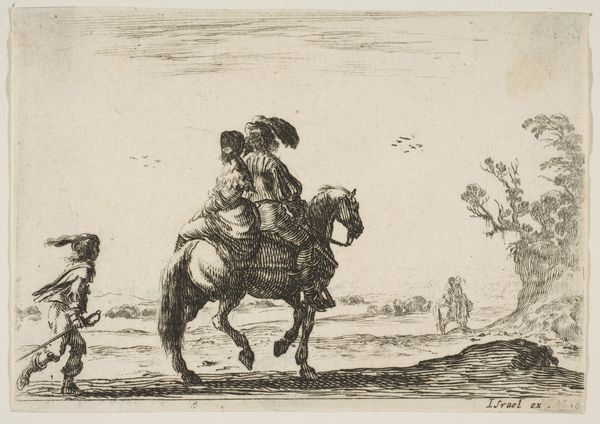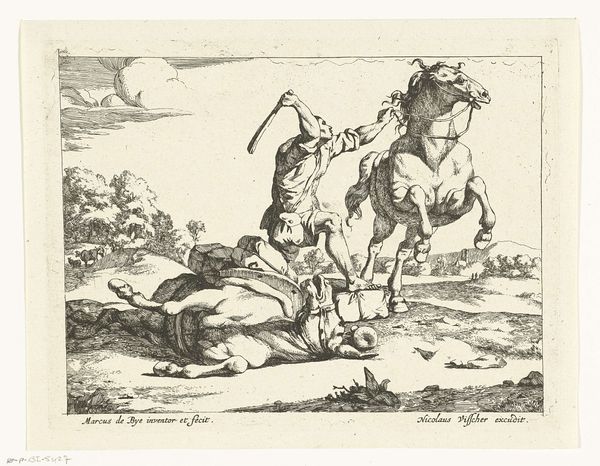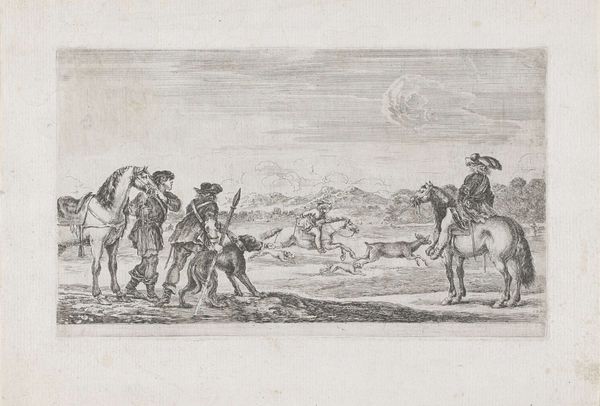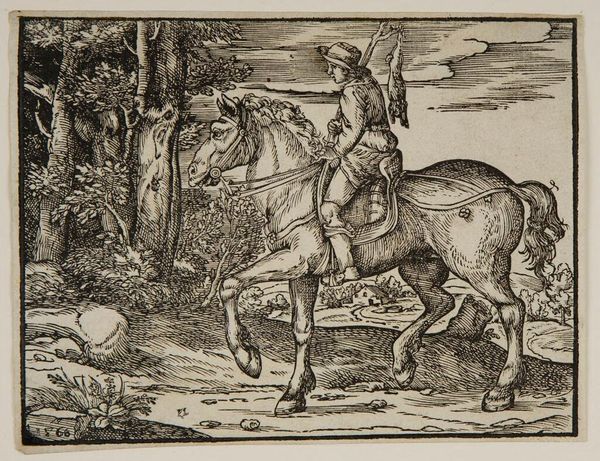
painting, oil-paint
#
baroque
#
dutch-golden-age
#
painting
#
oil-paint
#
landscape
#
figuration
#
genre-painting
Dimensions: 35.5 cm (height) x 53 cm (width) (Netto)
Curator: Abraham van Calraet created this Dutch Golden Age painting sometime between 1657 and 1722. It's entitled "Two Horsemen in a Landscape". What strikes you first about it? Editor: The somber, almost melancholic mood is the immediate takeaway. The muted colors, the heavy tree to the left balancing the distant hill on the right, and that cloudy sky—it all contributes to a sense of subdued stillness. Curator: Indeed, and that stillness belies a very active economic reality. These genre scenes were popular among the burgeoning merchant class. They offered a vision of an ordered and prosperous world that they themselves were creating through trade and manufacturing. Calraet’s use of oil on canvas provided a portable and durable object, ready to be bought and sold. Editor: Observe how the figures, especially the horsemen, are placed not as heroes but as integrated components of the broader visual field. The use of light emphasizes the natural details of the landscape. I also see what might be symbolic markers that elevate the commonness of this genre-painting theme into one that is representative of this culture's landed wealth. Curator: Precisely, the materiality of the painting—the very pigments and linen woven for the canvas—were products of Dutch commerce and innovation. Consider, too, the social context: landscape paintings served as powerful assertions of land ownership and control in a society increasingly defined by its global reach. Editor: And let's not forget how Calraet constructs visual relationships. The human figures lead us to the horse, then up into the sweeping vista of the land. Then dogs bring us back to the more human element as well. This deliberate organization steers us along the economic and political implications inherent in this landscape's pictorial rhetoric. Curator: The work speaks, quite literally, to the emerging world of mercantile capital, from the production of the canvas itself to the painting's subject matter as symbols of a rising bourgeois social order. Editor: Reflecting on Calraet’s art, I'm newly aware of how technical skill and keen observations about social symbols weave so perfectly together. Curator: And that the scene's very beauty is, in fact, embedded in something as basic as manufacturing. A reminder that visual art is intrinsically connected to economics, material conditions and culture.
Comments
No comments
Be the first to comment and join the conversation on the ultimate creative platform.
